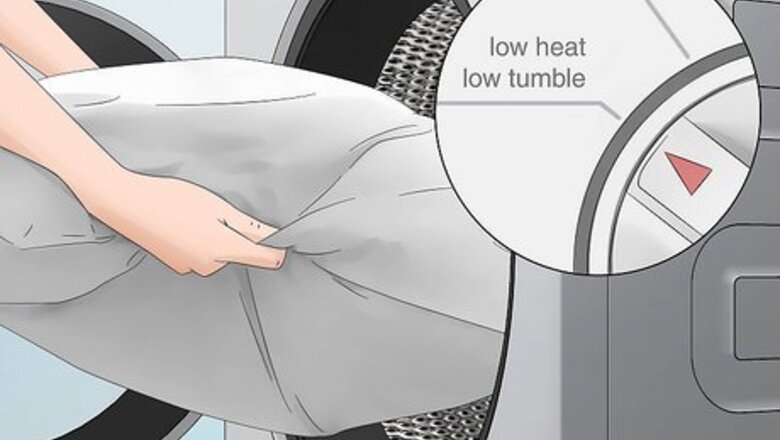
views
Tumble the pillow in the dryer.
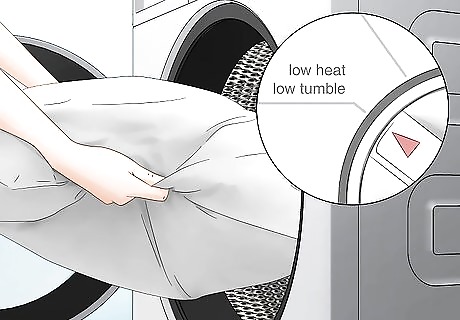
Use your dryer to break down the pillow with heat and pressure. Put your pillow in the dryer on a low heat, low tumble setting to avoid damage (too much heat can cause clumps in conventional pillows). Remove the pillow after 15 to 30 minutes. Always check the label or tag on your pillow to see if it can be machine dried. This is a great method for down and memory foam pillows. Feathers don’t do well in direct heat.
Warm the pillow with a heating pad or electric blanket.
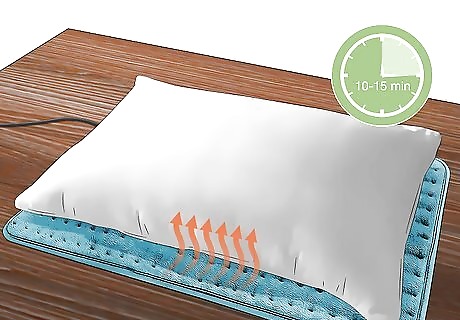
Use heat to soften stiff new pillows, especially memory foam. Turn on a heating pad or electric blanket to a medium heat and place it on top of the new pillow before bedtime. After about 10 to 15 minutes, the pillow will be softer and more comfortable to sleep on. Alternatively, use a hot water bottle in place of an electric pad or blanket. If you live in a cold environment, heat your pillow more frequently or after long trips away from home to help keep it soft.
Heat up the pillow near a radiator or space heater.
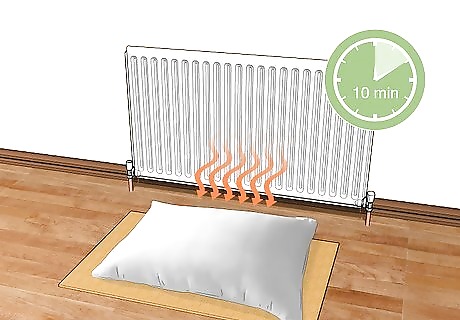
In cold months, soften your pillow with the heaters in your home. Place your pillow on a clean spot on the floor (or on top of a blanket) near a radiator or space heater for about 10 minutes. Be careful not to place it too close, since pillows are flammable. Softening with heat is especially effective on memory foam. Alternatively, just increase the room temperature of your bedroom to warm the pillow. Make extra sure your pillow is not touching the radiator or space heater—a hard pillow is more comfortable than a burnt one!
Leave the pillow out in the sun.
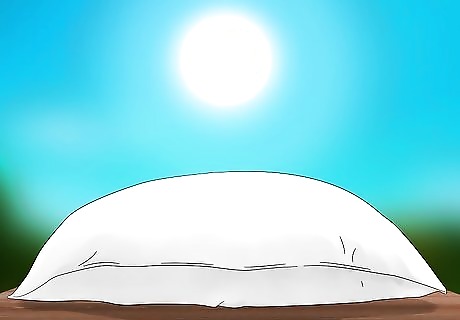
Use the sun’s heat to soften your pillow while you go about your day. Place your stiff pillow outside (in a clean, protected spot) and let it bask in direct sunlight for no more than an hour per side. Flip the pillow halfway through so both sides are evenly warmed and softened. The softening effects of sunlight might not be noticeable right away since you can’t use this method directly before bedtime. This is a good option for most pillows except feather ones, which shouldn’t be exposed to direct sunlight for too long. The fresh air will help eliminate any odors or “new pillow smell,” too!
Beat the pillow to relax the fibers.
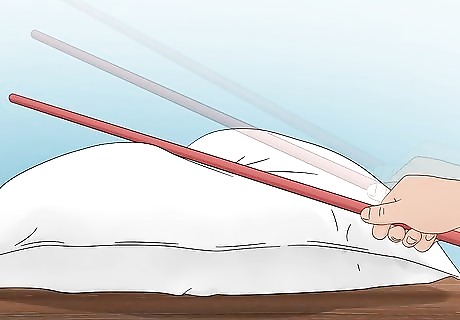
Use pressure to loosen the pillow fibers and make it feel softer. Lay the hard pillow on a flat, hard surface like a desk or the floor. Use a rug beater, broom handle, or another hard object and club the pillow a handful of times. Aim for the center (where your head goes) and any other particularly stiff spots. Alternatively, knead or punch the pillow with your hands. The pressure plus your body heat will relax the pillow and make it softer. Repeat before bedtime as necessary until the pillow is consistently soft enough for you. This method works on any type of pillow, including memory foam, feather, down, and wool.
Push down on memory foam pillows right before bed.

Use your hands or a weight to flatten the pillow right before you lay on it. Lay your head down in the depression before the memory foam regains its shape. This way, the pillow will form to your head and neck more quickly. Depress the pillow for about 2 or 3 minutes before you lay down. If possible, use your hands or something warm since the heat will soften the memory foam even more.
Raise your body temperature before bed.

Use elevated body heat to soften the pillow faster than your resting heat. Right before bed, do some physical activity, like jumping jacks, consume something hot like soup or tea, or take a hot bath. The extra heat (plus the weight of your head) will get absorbed by the pillow and break it down. This is more effective on memory foam pillows than on other kinds. If you tend to feel too warm while you sleep, this might not be the most enjoyable option. The good news is you’ll only have to do it for a couple of nights.
Stuff the pillowcase with softer material.
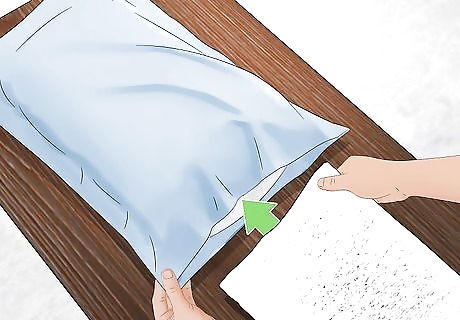
Surround the hard pillow with softer fabrics and cushions while it breaks in. First, put the pillow in a pillowcase that’s slightly too large for it. On one side, stuff the case with batting, cotton, feathers, polyester, or even towels or clothing. Fill it with enough material to make it comfortable while the pillow itself softens. Distribute your extra padding evenly so there are no clumps in your pillow. Use clean, dry material for hygienic reasons.
Sleep on it!

Use your pillow every night to break it in with your body heat and head weight. The more you use it, the faster it will soften or mold to your head shape. It takes some time—usually about a week, depending on the type and fitness of the pillow—so be patient while you get some shut eye. Speed up the process by resting your legs on your pillow while you work or watch TV during the day.




















Comments
0 comment